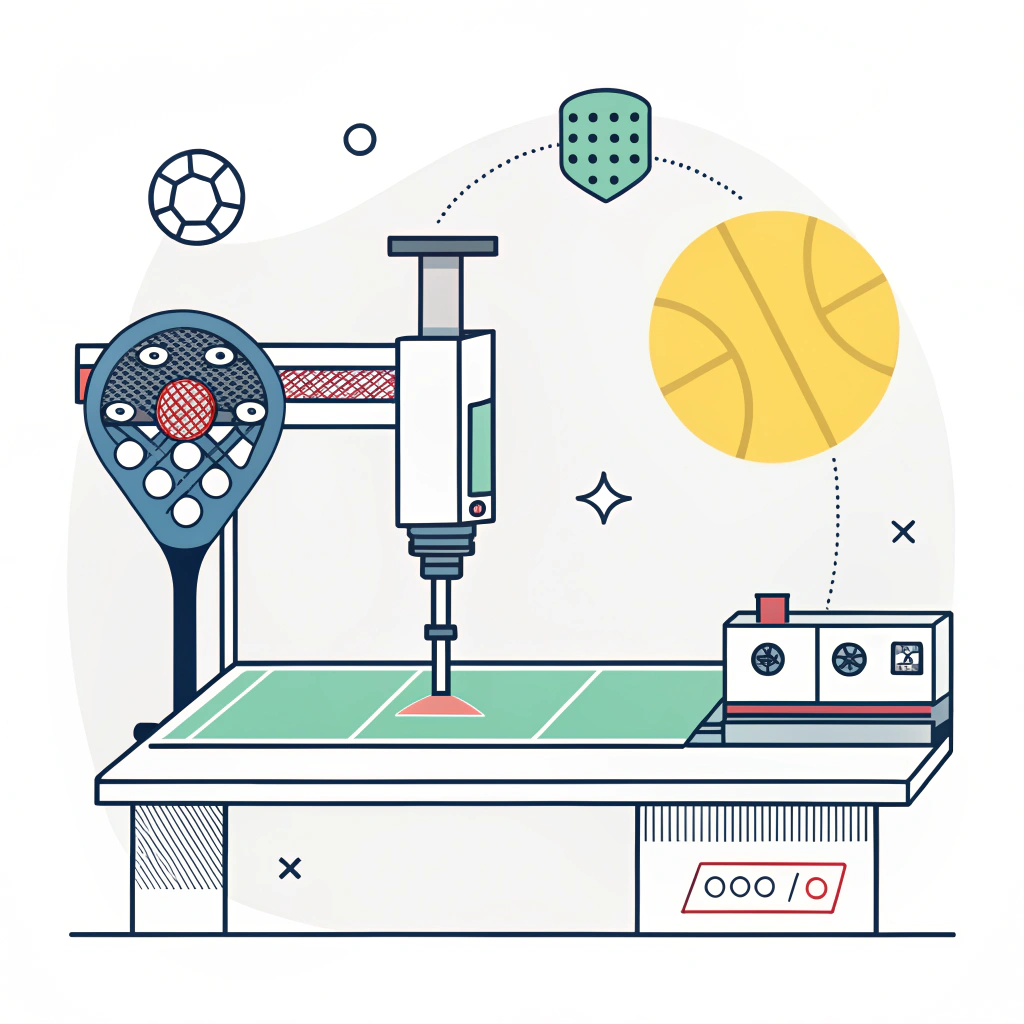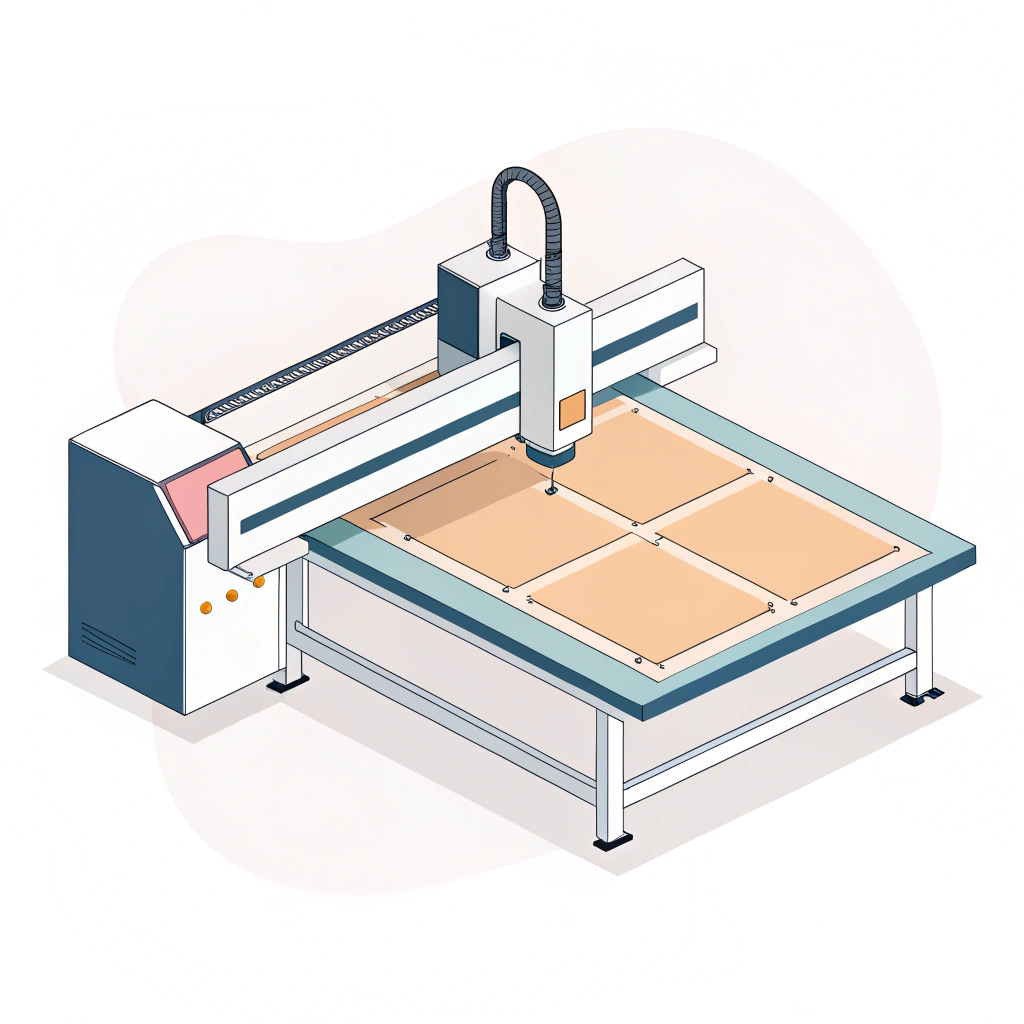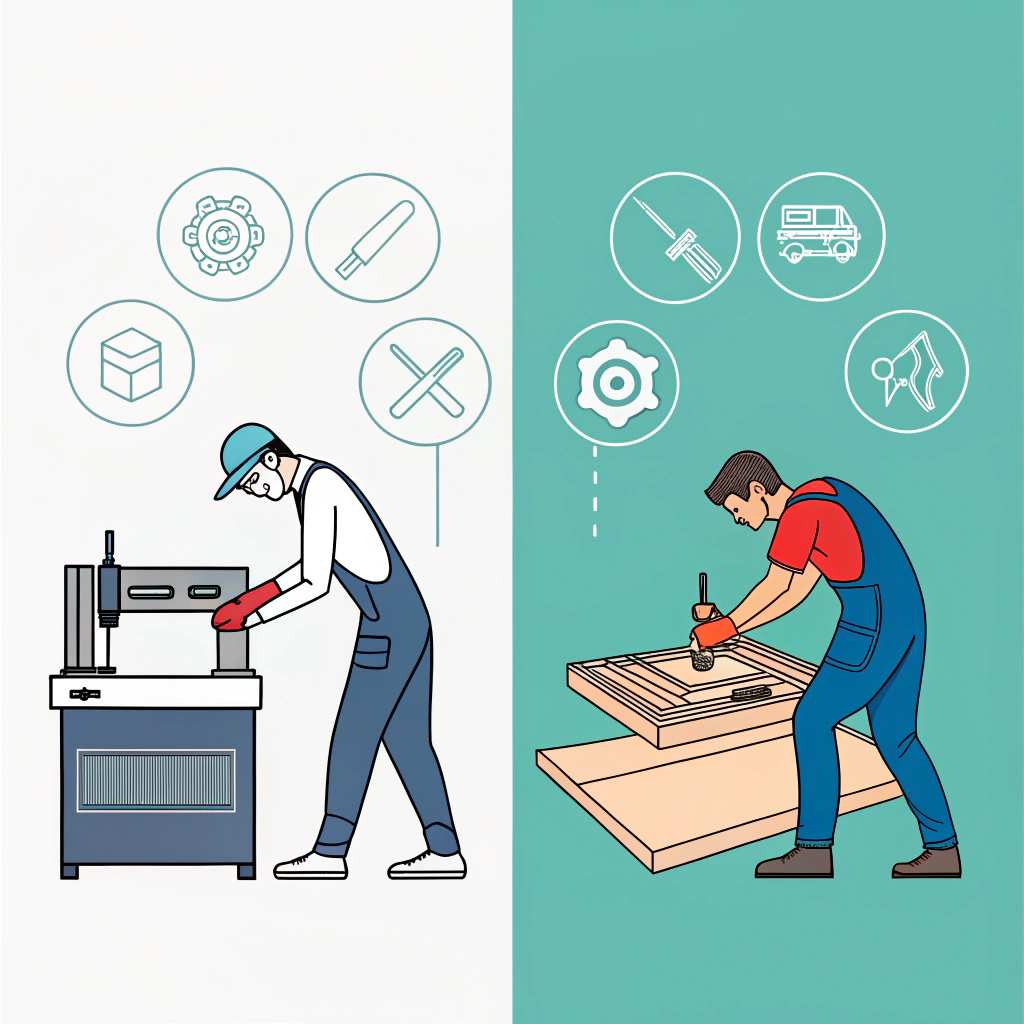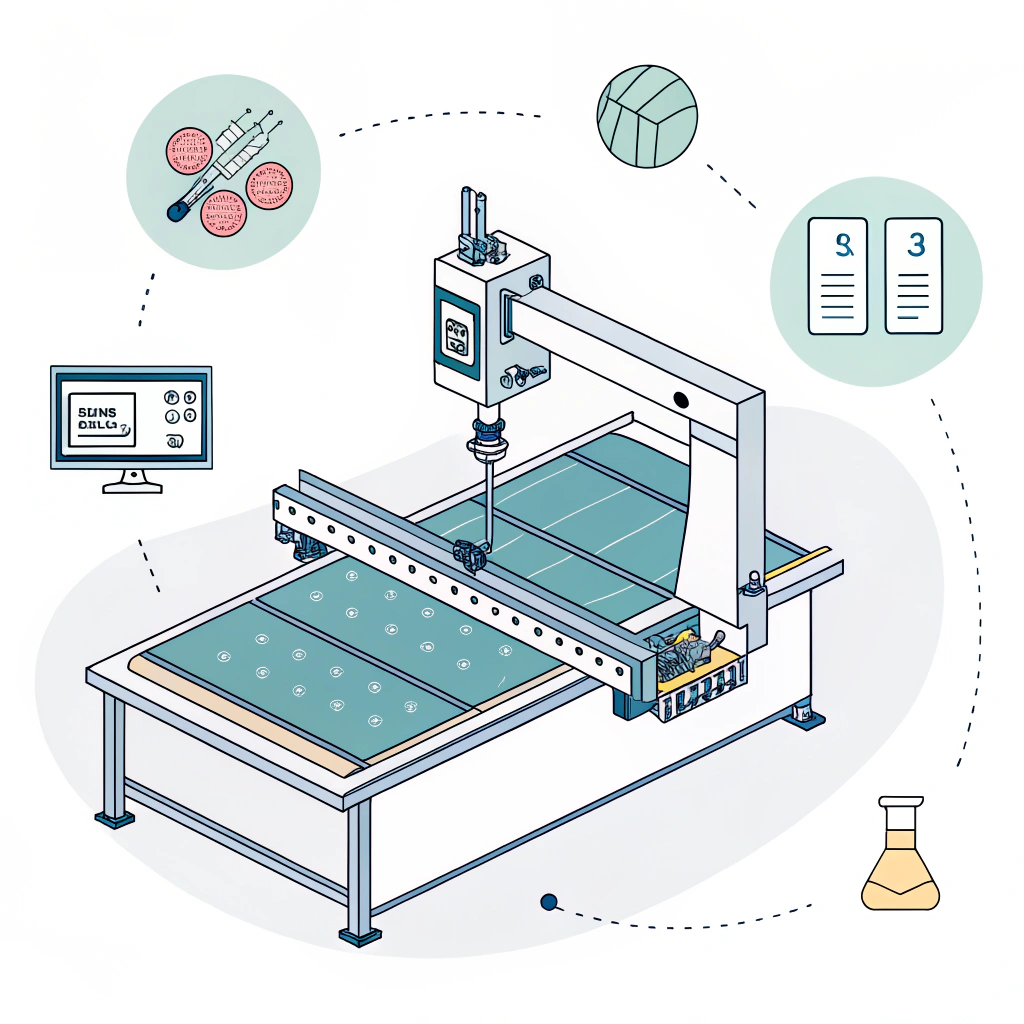CNC cutting stands out as a transformative method in the production of high-performance pickleball paddles by increasing precision, consistency, and overall quality while reducing long-term production costs.
In today’s competitive sports equipment manufacturing landscape, advanced techniques like CNC cutting1 are redefining how production managers and technical engineers ensure quality control and process optimization. Compared to traditional methods, CNC cutting offers unmatched precision with reproducible results. This technology plays a crucial role in enhancing the production of pickleball paddles, especially when using premium materials such as carbon fiber2 and fiberglass3.
Traditional manufacturing processes for pickleball paddles often rely on manual or semi-automated methods. These methods, while effective in the past, face several challenges such as variability in product quality, higher rates of material waste, and longer production cycles. In contrast, CNC cutting operates based on computer numerical control ensuring each cut is executed with tight tolerances. The precision and repeatability provided by CNC technology directly translate into better quality control and improved product performance on the court.
Below is a comparative table that illustrates the core differences between CNC cutting and traditional manufacturing processes:
| Feature | CNC Cutting | Traditional Methods |
|---|---|---|
| Precision Accuracy | High precision with exact repeatability | Variable precision influenced by human error |
| Consistency | Uniform quality across all parts | Quality can vary from unit to unit |
| Production Efficiency | Faster cycle times with reduced waste | Slower production cycles, increased material waste |
| Automation Level | Highly automated with minimal human intervention | More manual interventions required |
| Cost over Long Term | Lower long-term costs despite higher initial investment | Potentially higher costs due to rework and waste |
| Adaptability to Materials | Easily adapts to advanced, composite materials | May struggle with complex materials like carbon fiber or fiberglass |
This table clearly demonstrates how CNC cutting elevates production efficiency and product consistency.
Advanced manufacturing techniques are vital in today’s factory environment, particularly for sports equipment production. CNC cutting is integral to ensuring that each pickleball paddle is produced with meticulous attention to detail. Here are some ways in which CNC cutting enhances quality control and reduces costs:
-
Precision Control and Repeatability
CNC machines operate on programmed designs, ensuring that every paddle is cut to the exact specifications required. This leads to uniformity in size, shape, and material thickness. For products like pickleball paddles, where slight deviations can affect performance, this precision is critical. -
Reduction of Material Waste
Traditional cutting methods often result in a significant amount of scrap material due to imprecise cuts. CNC cutting optimizes the use of raw materials by calculating the most efficient cutting patterns. This not only reduces waste but also lowers material costs, making the production process more sustainable and cost-effective. -
Enhanced Product Durability and Performance
The uniformity created by CNC cutting directly impacts the performance of pickleball paddles. When fabrics like 3K Carbon Fiber, 12K Carbon Fiber, or T300 Carbon Fiber are used, maintaining consistent material properties is essential for achieving high performance on the court. CNC technology minimizes structural imperfections, which in turn improves the paddle’s resilience and responsiveness. -
Shortened Lead Times and Increased Production Rate
By automating the cutting process, factories can significantly reduce production time. Faster cycle times mean faster turnaround for orders and more efficient use of production capacity. In a competitive market, this efficiency can drive substantial improvements in lead times and overall productivity. -
Better Integration with Quality Control Systems
Modern CNC systems can be integrated with digital quality control tools that continuously monitor and adjust parameters. This real-time monitoring ensures that any deviations from the desired quality standards are corrected promptly, maintaining consistent output and reducing the likelihood of defective products.
Pickleball paddles today are often constructed from innovative composites, blending carbon fiber with fiberglass or even composite materials such as bamboo core composites and honeycomb cores4. CNC cutting is uniquely suited to handle these advanced materials without compromising their inherent benefits. For instance, in paddles where a hot pressing5 process is used to ensure durability, CNC cutting can accurately trim the final product, ensuring that design elements like cutouts (which serve as safety features) are formed precisely.
The integration of CNC systems within existing production lines involves several key steps:
- Design and Programming: Engineers use Computer-Aided Design (CAD) tools to create detailed paddle designs. These designs are then converted into machine-readable code that guides the CNC cutting process.
- Material Setup: The raw materials, whether they are sheets of carbon fiber, fiberglass, or composite panels, are carefully loaded into the CNC machine. The precise clamping and positioning ensure stability during cutting.
- Cutting Process: The CNC machine executes the programmed cuts, ensuring that each paddle is cut with high accuracy. Advanced sensors and feedback systems help in real-time adjustments, maintaining quality throughout the process.
- Post-Processing and Quality Inspection: Once the cutting is complete, the paddles undergo further processing, such as edge finishing and quality checks. The consistent precision from the CNC process simplifies these post-production steps, leading to a higher yield of quality products.
Below is a breakdown of the key features that highlight the benefits of CNC cutting in a structured format:
| Stage | CNC Cutting Benefits | Impact on Production |
|---|---|---|
| Design Integration | Smooth transition from CAD to machine code | Minimizes design-to-production errors |
| Material Handling | Precise clamping and automated feeding systems | Reduces material movement errors |
| Cutting Process | Consistent, high-speed cuts with fine tolerances | Improves product uniformity and operations |
| Post-Cutting Quality Check | Real-time monitoring and feedback loops | Enhances defect detection and minimizes rework |
This breakdown underscores how CNC cutting aligns with the critical production metrics required in the sports equipment industry.
While CNC cutting offers multiple advantages, there are important factors and potential limitations to consider:
Implementing CNC cutting systems involves a high upfront investment in both equipment and training for technical staff. However, the long-term benefits in terms of reduced production errors, lower material waste, and increased production rates often offset these costs. Regular maintenance and system upgrades are crucial to sustain high performance levels and to fully benefit from the technology.
CNC cutting is highly adaptable to complex designs and materials, which is particularly beneficial for paddles that integrate advanced composites or require specific cutouts for safety purposes. Nonetheless, continuous research and development remain essential to keep pace with evolving material technologies and to further refine the precision of cutting operations.
The sports equipment manufacturing sector is continuously evolving. Innovations such as improved sensor integration, machine learning algorithms for predictive maintenance, and augmented reality interfaces for machine control are paving the way for even higher efficiency and precision. As these advancements are integrated, the gap between CNC cutting and traditional methods will widen further, setting new industry standards for quality and performance.
A crucial aspect of modern manufacturing is sustainability. CNC cutting’s ability to reduce material waste and optimize energy usage contributes to greener production practices—a significant consideration for companies looking to improve their environmental footprint. Moreover, with continuous process improvements and effective quality control measures, companies can increase their operational efficiencies, which is paramount in a competitive global market.
For production managers and technical engineers considering an upgrade to CNC cutting, we suggest the following steps:
- Perform a thorough cost-benefit analysis comparing your current production methods with the potential advantages of CNC cutting.
- Engage with technology providers who specialize in CNC systems integrated with real-time quality control capabilities.
- Consider pilot projects to evaluate the benefits in a controlled production environment before full-scale implementation.
- Regularly update and maintain the CNC equipment to ensure optimal performance and integration with advanced production data systems.
- Stay informed about emerging trends in automation and materials science to continuously refine and improve your production processes.
In summary, CNC cutting is revolutionizing the manufacturing of pickleball paddles by offering superior precision, consistent quality, and significant cost reductions over traditional methods. This advanced technology not only meets the stringent demands of high-performance sports equipment but also provides a scalable solution for manufacturers aiming to enhance efficiency and maintain a competitive edge. By adopting CNC cutting, companies can ensure a smoother production process, minimize defects, and ultimately deliver a product that upholds the highest standards of durability and performance. We encourage decision-makers in the sports equipment sector to explore the integration of CNC cutting technology as a strategic investment towards future-proof manufacturing operations.
-
Why do some pickleball paddles have a cutout?
Some pickleball paddles feature a cutout as a safety measure. The cutout helps segregate areas of the paddle that might be prone to damage, such as where fiberglass may delaminate or carbon fiber could splinter. This ensures that any potential damage does not affect areas intended for striking the ball, thus maintaining both safety and performance. -
What advantage does carbon fibre construction offer in a pickleball paddle?
Carbon fiber construction delivers a stiffer and more responsive paddle, enabling players to generate more power behind every shot while maintaining high levels of accuracy. This makes the paddle particularly suitable for competitive play where both power and precision are critical. -
What makes expensive pickleball paddles better?
Higher-end pickleball paddles often incorporate advanced materials such as carbon fiber, raw carbon, and fiberglass. These materials contribute to enhanced control, power, spin, and overall performance, ensuring that the paddles deliver superior performance compared to more basic models.
-
CNC cutting: Read the article to understand how computer numerical control improves manufacturing precision and efficiency, enabling consistent production of high-quality products. ↩ ↩
-
Carbon fiber: Explore detailed insights on carbon fiber properties, including its strength-to-weight ratio and applications in advanced composite manufacturing. ↩ ↩
-
Fiberglass: Learn about fiberglass as a composite material, its benefits in reinforcing products, and its role in modern manufacturing processes. ↩ ↩
-
Honeycomb cores: Gain an understanding of honeycomb cores, their structural benefits, and their application in creating lightweight yet strong composite panels. ↩ ↩
-
Hot pressing: Discover the hot pressing process, its significance in enhancing material durability, and how it is integrated into composite manufacturing. ↩ ↩







